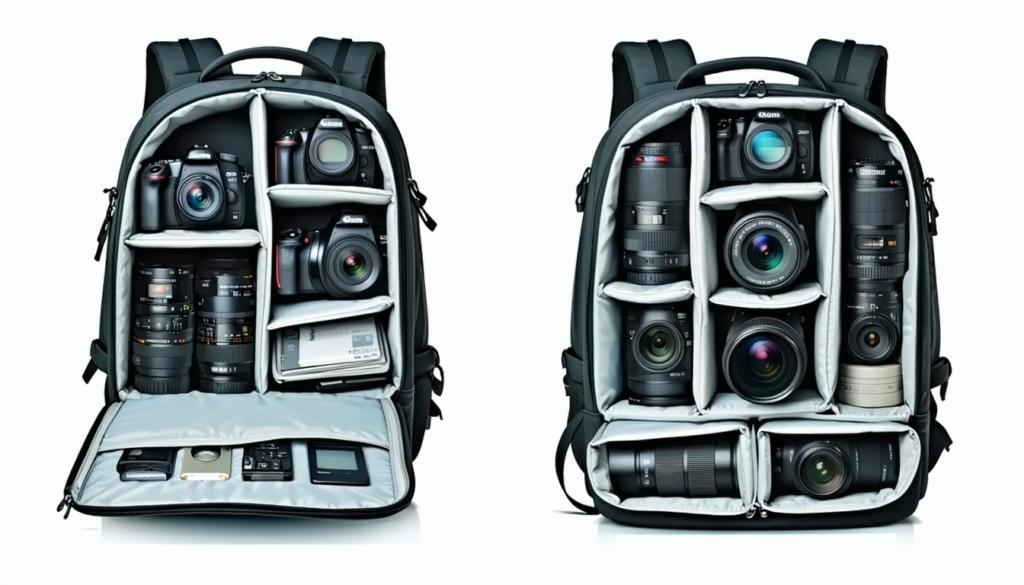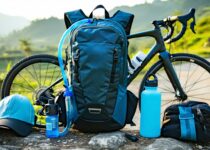How To Fit Multiple Camera Bodies In One Backpack

You’re heading out for a shoot, juggling two camera bodies, lenses, and accessories, all in one backpack. Fitting multiple camera bodies in one backpack can feel like a jigsaw with too many pieces. If you’re searching for how to fit multiple camera bodies in one backpack, you’ve come to the right guide. In this post, you’ll learn simple steps to pick the right pack, customize its dividers, and pack like a pro—so your gear arrives safe and ready to go.
Assess Your Gear Needs
Before you pack, list every camera body and lens you plan to carry. Ask yourself: how many bodies do I need, and will they travel with lenses attached or bare? Don’t forget chargers, batteries, memory cards, and small accessories. Jotting down your gear mix helps you choose a backpack with the right capacity and compartments.
Choose The Right Backpack
Picking a bag designed for multiple bodies sets you up for success. Look for a pack with modular dividers, sturdy padding, and a firm frame. Check weight limits and back support features to avoid strain. If you’re still unsure about size, this post on how to choose the right size camera backpack walks you through measurements and fit tips.
Key features to compare:
- Padded main compartment with adjustable dividers
- Quick-access side or top entry points
- Compression straps to stabilize heavy loads
- Ergonomic shoulder straps and hip belt
Customize Interior Dividers
A modular divider system is your secret weapon for fitting multiple bodies. Start by mapping out each camera body’s zone—one divider per body keeps them from bumping. Then carve out slots for lenses or flashes around those zones. If your bag came with foam inserts, use a thin utility knife to reshape them.
Steps to customize:
- Lay gear on a flat surface in packing order
- Position dividers around each body and lens
- Trim excess foam from unused sections
- Test fit and tweak until nothing shifts
For more tips on inserts and tools, see our guide on how to customize a camera backpack with inserts.
Pack Your Camera Bodies
Now that your dividers are set, slide in each camera body with care. Keep the lens mount facing the divider wall for extra protection. If you’re carrying mirrorless and DSLR bodies together, separate them with thicker padding to account for different weights. Angle heavier bodies closer to your back to improve balance.
Pro packing pointers:
- Wrap each body in a soft cloth or neoprene sleeve
- Place the most delicate or expensive body deepest in the pack
- Stagger camera heights to use vertical space efficiently
Want layouts that speed up lens changes on the go? Check out the best camera backpack layouts for fast access.
Balance And Secure Load
A lopsided pack can slow you down and strain your back. Aim to center weight as close to your spine as possible. Use the bag’s compression straps to cinch everything tight, preventing cameras from shifting. If your pack has a sternum strap or hip belt, buckle them to share weight across your torso and hips.
Balance strategies:
- Evenly distribute bodies left and right of center
- Slot heavier items low and close to your back
- Tighten compression straps after every gear adjustment
For detailed advice on load tuning, read how to balance weight in a camera backpack.
Organize Smaller Accessories
Memory cards, batteries, cables, and filters need their own zones. Small zippered pockets or labeled pouches keep these bits handy and safe. Group similar items together—batteries in one case, spare cards in another—to avoid a bottom-of-the-bag scramble.
Accessory organization tips:
- Use a dedicated small pouch for memory cards, then link to the safest way to store memory cards in a backpack
- Stash batteries in a padded battery wallet
- Coil cables neatly and secure with velcro straps
- Keep lens cleaning tools in a front pocket for quick access
Protect Against Elements
Rain, dust, and accidental spills can ruin electronics. A built-in rain cover or waterproof shell keeps moisture at bay. If your pack lacks that feature, carry a compact rain cover or large plastic bag in a waterproof pocket.
Weatherproofing practices:
- Deploy a rain cover immediately when clouds gather
- Store camera bodies in sealed dry bags for humid conditions
- Wipe backpack zippers with a dry cloth after rain
For more on keeping gear dry, explore our weatherproofing tips for your camera backpack.
Maintain Backpack Gear
A clean, well-maintained pack extends its life and performance. After every trip, empty pockets and shake out debris. Wipe interior walls with a damp cloth to remove dust or sand. Check dividers and straps for wear, and replace foam inserts if they lose shape.
Maintenance checklist:
- Inspect zippers, buckles, and seams for damage
- Vacuum out loose dirt or grit
- Air the bag out fully before storing in a cool, dry place
Learn step-by-step care techniques in our post on how to clean and maintain a camera backpack.
Frequently Asked Questions
How many camera bodies can fit in one backpack?
Most medium to large camera packs handle two to three bodies with attached lenses. Smaller bags may only fit two bodies without lenses attached.
Should I remove lenses from camera bodies?
Removing lenses lets you pack bodies closer together, but adds handling steps. If your dividers are snug and padded, you can leave lightweight lenses attached.
Can I use travel camera straps inside the bag?
Yes, using padded straps inside the pack adds an extra cushion between bodies. Loop them around dividers to secure each camera.
What’s the best way to prevent gear from shifting?
Compression straps, snug divider placement, and packing heavier items low and centered all work together to minimize movement.
Do I need a separate memory card case?
Absolutely, a dedicated card case protects your cards from bending and keeps them organized so you never dig in the bottom of your pack.
Can I mix mirrorless and DSLR bodies?
You can, but separate them with thicker padding since DSLRs tend to be heavier. Stagger their positions to balance overall weight.
How often should I replace backpack dividers?
When dividers lose their firmness or shape, swap in new foam or padded inserts. Inspect yours every few months if you travel often.
Conclusion
Packing multiple camera bodies in one backpack doesn’t have to be a challenge. By assessing your gear, choosing the right bag, and customizing interiors, you’ll protect your cameras and stay organized on the move.
Give these tips a try on your next shoot, and notice how much easier it is to carry all your bodies and lenses in one neat, balanced pack. If you have a favorite packing hack, share it in the comments below—let’s help each other shoot smarter.


